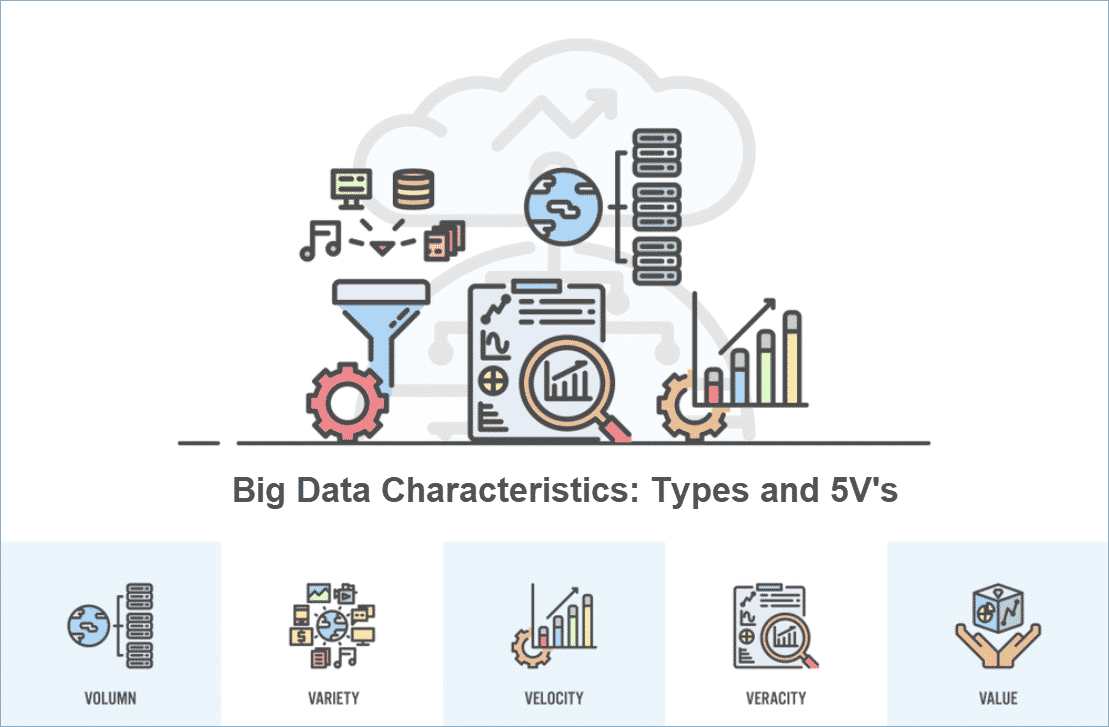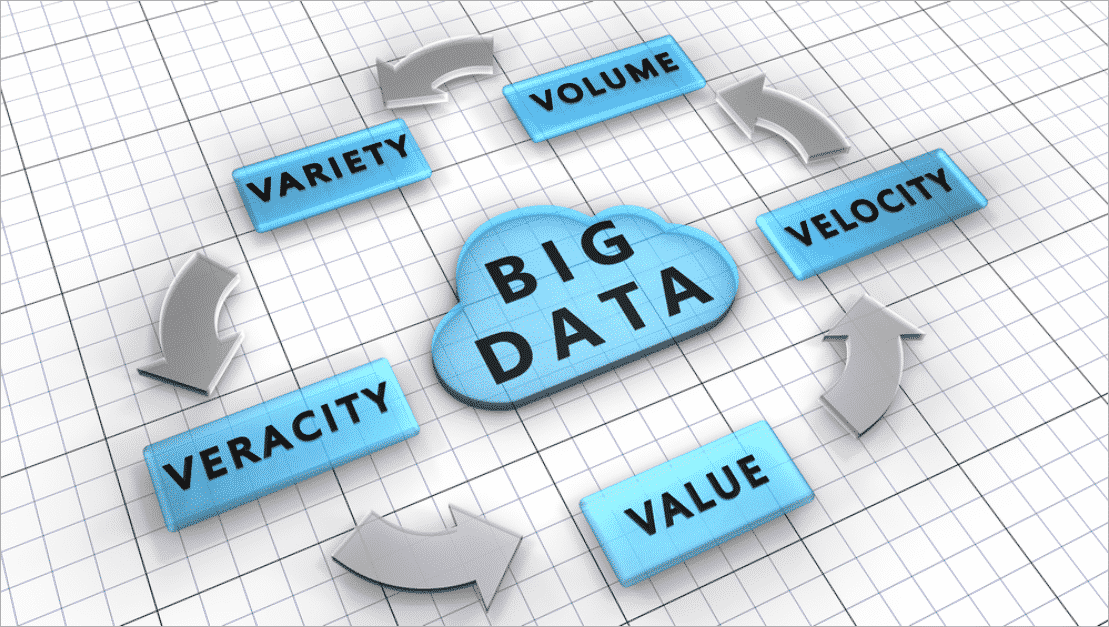We are presently living in the Internet era; with every passing second, more and more data are being created. Analyzing this huge data or Big Data as it is commonly known takes a lot of time and effort. Data scientists and Data analysts must have the required knowledge and Big Data skills to analyze Big Data to derive meaningful insights from them. They can then help their organizations to understand the market and predict market trends, consumer buying behaviors, and create products and services that efficiently meet the customer requirements. Therefore, it is crucial to have a understanding of big data, its characteristics, and its types.

Jump ahead to
What is Big Data?
Big Data is a term given to a collection of a large volume of data that grows with time. This data collected over a period can give information and insights which can be used for the benefit of business enterprises and other organizations. Big Data is so complex and so huge that it is impossible to store and process them using traditional storage and computing methods. If this information present in its raw form, is derived and analyzed properly, organizations around the world can utilize it to develop their business plan in a unique way and generate profit.
Types of Big Data
The sheer volume and complexity of Big Data are not the only characteristics that make Big Data so difficult to process. Information cannot be readily derived from Big Data in its raw form. They need to be transformed into easily understandable data first. There are three types of Big Data based on structure, these are:
- Structured
- Unstructured
- Semi-structured
The structure of Big Data is very essential. Depending on the structure of the data, data analysts can derive the information. Every data goes through the ETL (extract, transform, load) process before it can be analyzed. This process includes harvesting the data, formatting it to make it readable, and then storing them for later use. For every type of Big Data, the ETL process is different.
Structured Data
This is the easiest form of Big Data to work with. It is organized and has defined parameters. Structured data are quantitative data like age, contact, expenses, debit/credit card numbers, etc. Since structured data are already quantifiable, it becomes easier to process and analyze in a program. However, only 20% of the Big Data is structured, the rest is semi-structured and but mostly unstructured data.
Unstructured Data
These are the unorganized data that are the most difficult to process and analyze. Data analysts struggle with working with unstructured data, and it forms a large section of the raw Big Data. Almost every data generated on the internet around the world is mostly in unstructured form. It takes a long time to process and analyze. However, the information derived from this form of data is highly rewarding and beneficial for business enterprises.
Semi-structured
As the name suggests, this form of Big Data is part-structured and part-unstructured. Mostly, semi-structured data are unstructured data with metadata attached to them. These can be data like location, time, email address, etc. They are not as difficult to work with like unstructured data and can be used to identify patterns with the help of the metadata. AI and machine learning can then process these patterns and analyze them to derive meaningful information.
Characteristics of Big Data

The characteristics of Big Data are defined by 5V’s – Volume, Velocity, Variety, Veracity, and Value. Data scientists use the 5V’s of Big Data to identify the importance of the information that will be derived from them. If the data is not useful or customer-centric, then it is not worthwhile to process. Thus, by understanding the characteristics of Big Data, business enterprises can save a lot of time and effort to process Big Data.
Initially, there were just 3 characteristics of Big Data known as the 3V’s of Big Data – volume, velocity, and variety. Over the years, two more – value and veracity were added to form the 5V’s of Big Data. These are described below:
Volume
Volume refers to the amount of data. It depicts the size of the data that exists in the raw form on the internet that needs to be collected. When the data collected is large enough it is considered Big Data. It is the primary characteristic of Big Data.
Velocity
This refers to the speed of the data generation and its movement. The velocity of Big Data depicts the flow of information through the internet at a specific time frame. This characteristic can be useful to identify current market trends and predict future patterns in a particular period.
Variety
This depicts the nature and diversity of the data available. It represents all types of data including raw unstructured data, structured as well as semi-structured data. These can be in the form of various sources which may or may not change over a particular period.
Veracity
This is the quality and accuracy of data that has been collected. Big Data may have some inaccuracy or may not be useful or have some information that is missing. By understanding the veracity of Big Data, data analysts can judge the quality of the information collected.
Value
The last characteristic of Big Data describes if the data collected can provide valuable information and add value to the business. This determines whether organizations can utilize the information derived from Big Data to their advantage.
Importance of Big Data
Big Data has been beneficial in the medical and healthcare sectors to identify and analyze disease risk factors across the world. The present pandemic crisis the world is under is one of the primary examples of the utilization of Big Data. Energy industries and commercial enterprises use information collected through Big Data analysis to analyze demands, manage customer expectations, and predict market behavior.
Organizations that use Big Data can make informed decisions about their products and services. Big Data analysis offers organizations a competitive advantage over their business counterparts. The banking and manufacturing sectors use Big Data to create new products and services. Big Data Certifications is a revolutionary new field and has a huge potential to develop further. Learning about tools and technology that will help analyze Big Data offers many advantages in terms of career growth in and promotability.



